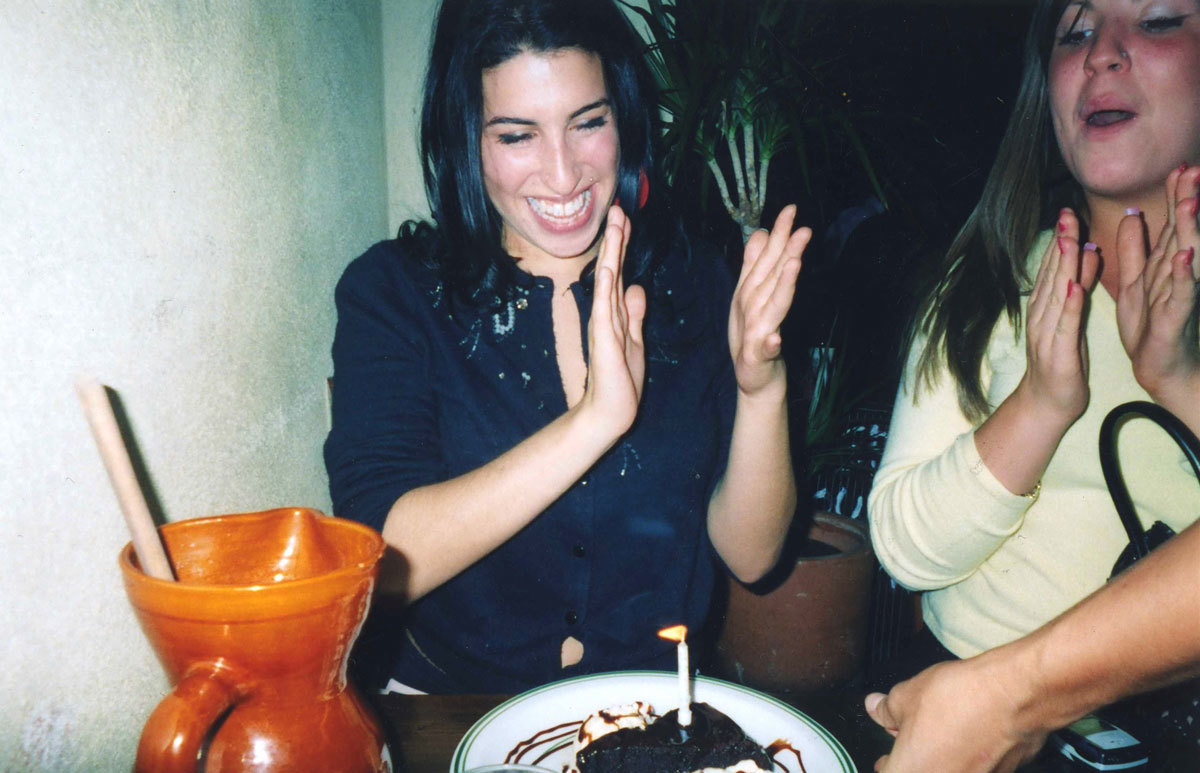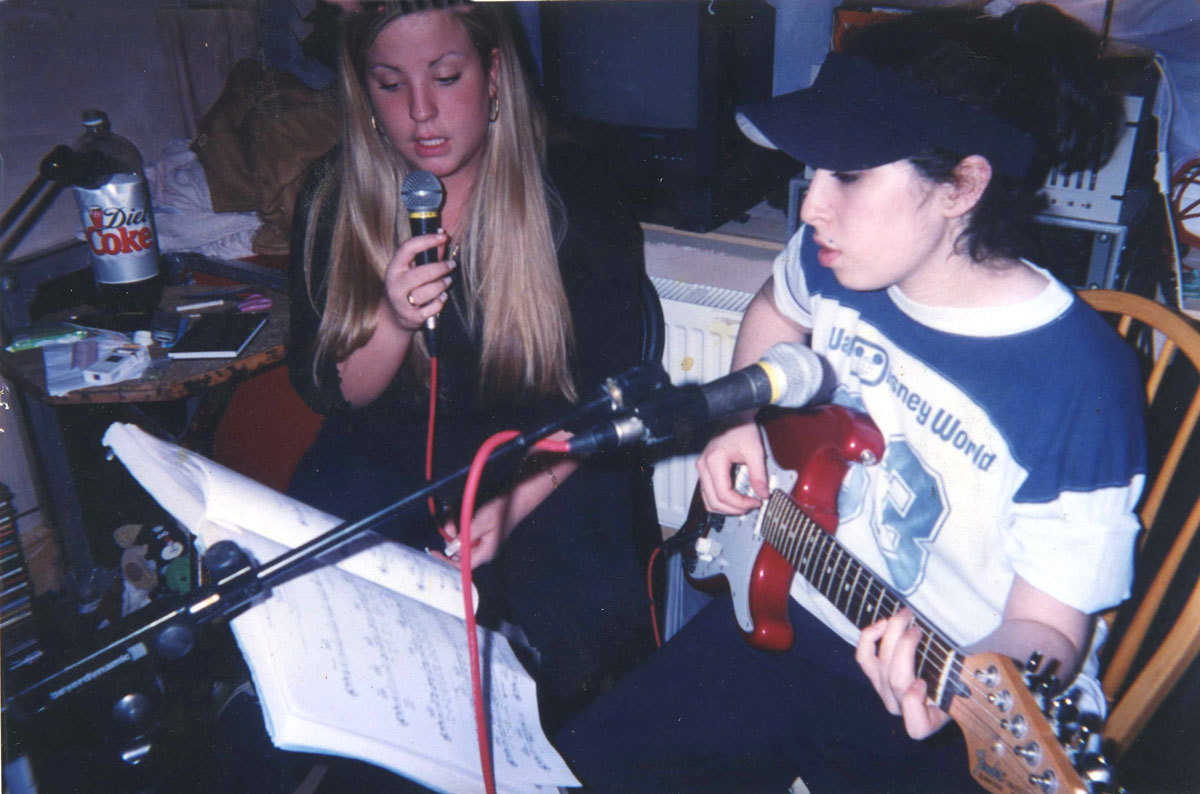Fuck, she was funny. That’s what you think when you see Amy Winehouse’s response to an interviewer who compares her to insipid singer songwriter Dido around the release of her first record, Frank, in 2003. Her reaction would today be the stuff of a GIF maker’s dreams: she (barely) feigns surprise, before registering boredom, incredulity and disdain.
It’s one of the numerous scenes from Asif Kapadia’s film about the singer’s life, which received its first screening at Cannes this weekend, that show how no one was safe from the Winehouse wit. Not Justin Timberlake, who Amy balks at when hearing he’s called his record What Comes Around…Goes Around. Not the bloke who added horns to one of her Frank tracks: “I hate the guy who did that,” she vehemently insists on a radio show. Not Terry Richardson, the highlight of whose photoshoot (Amy says on camera to her boyfriend Blake Fielder) is when it’s going to be over.
Amy Winehouse was a witty, one of a kind talent one whose brilliance would in time beget fame she didn’t even want and an addiction that turned out to be fatal. She beat Timberlake to win the final of her five Grammys in 2008, but confided in a friend that the evening was totally boring without drugs (she was clean at the time, under contractual agreement with Universal). The reason Amy wanted off the Richardson set so bad was to go get high with Fielder. Amy combines early unseen home footage with often distressing scenes of the later public descent into hell in order to tell a complicated story about a complex woman.

Kapadia, director of Senna, tells Amy’s story through audio-only interviews from those closely involved with the singer, including Fielder. The director always keeps the camera – whether grainy phone or Grammys slick – on his subject. He lets Amy have the final say on the film’s biggest contentions, using her lyrics to build the bigger picture. One overriding theme is that of her desire for a strong, dominant male presence in her life. When early boyfriend Chris Taylor explains Amy’s desire for him not to show any weakness in the relationship, she explains herself in Stronger Than Me with its withering line “Feel like I’m the lady to your ladyboy”. If it’s one thing that Amy reminds us of, it’s how sharp her tongue was. It also reminds us that everything we need to know about Amy is here already. She poured everything in the lines of her songs.
The Amy story starts in 1998 and home video footage of a birthday party for one of her childhood friends. Amy is, even then, gobbing off to camera. She’s already been through her parents’ separation and has, in her words “gone wild”. The filmmakers persuaded her friends Lauren Gilbert and Juliette Ashby to participate in the film. Those close to Amy made a pact after her death in July 2011 not to speak publicly. These fresh testimonies and that of Amy’s first manager and friend Nick Shymansky prove crucial in shining light on Amy as a person. They are also damning witnesses of others as Amy’s troubles mount.
As Amy’s talent rose so did the pressures of fame. She repeatedly states her reluctance to be in the spotlight. Even by the time of the Brits in 2007, when the tabloids interest had rocketed, she said: “If I really thought I was famous, I’d top myself.” By then she was already involved in another circus, her relationship with Blake Fielder, who proves an ominous, troubling and – the film takes the time to point out – similarly troubled presence in Amy’s world. As her success and adjacent issues spiral, so her childhood friends and early manager slip from view. In their place are forces apparently naïve to the extent of her illness or neglectful of her well-being. Pap shots become the dominant visual story, insisted upon by a vampiric media. She plays gigs while out of it, completely unwell. Closer to home, the filmmakers lay blame with those increasingly part of Amy’s management circle, most pointedly her dad Mitch Winehouse.

It’s around Mitch that the film proves most controversial. He is portrayed as largely absent from her childhood; later on, her drive is frequently attributed to a desire to impress him. The film suggests that while her friends wanted Amy in rehab, her dad said she didn’t need to go, so she didn’t. As the line in Rehab goes, “and if my daddy thinks it’s fine.” Mitch Winehouse and the Winehouse family fully co-operated with the film but have since withdrawn their support, citing allegations made against them that are unfounded and unbalanced.
The final stretch of Amy is, inevitably, to be watched with a heavy heart. Away from the context of being just your average tabloid fodder, seeing those bloodied, filthy ballet pumps or the obvious distress of their wearer caught in the camera’s unforgiving eye, it seems astounding that everyone involved allowed this to happen. But it did. And it’s much easier to examine now that it is done. Addiction is a complex illness and one challenging to unpack at the best of times, never mind retrospectively.
That doesn’t negate Amy. If anything, the film is a plea for compassion and a greater understanding of addiction and mental health issues. Nor is Amy simply drawn as victim: it also shows the singer as a complex character, presenting different sides of herself to different people. She was a challenge, and not only to interviewers unwisely bringing Dido into the equation. Amy has a sad inevitability about it; it’s testament to both the filmmaker’s work – and ultimately Amy Winehouse’s talent – that you still come away from all that horror remembering the good bits: the LOLs, the lyrics, that voice.
Amy is in cinemas July 3

Credits
Text Colin Crummy
